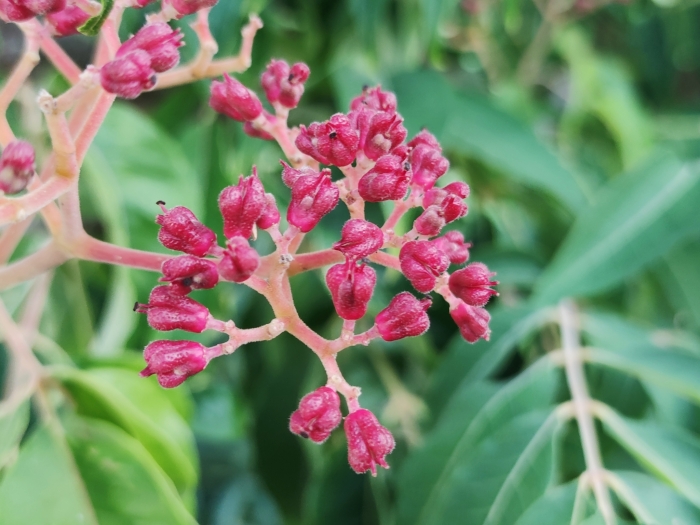Bee Bee Tree
(Tetradium daniellii)
Bee Bee Tree (Tetradium daniellii)
/
/

Sarka Masova
CC BY 4.0
Image By:
Sarka Masova
Recorded By:
Copyright:
CC BY 4.0
Copyright Notice:
Photo by: Sarka Masova | License Type: CC BY 4.0 | License URL: http://creativecommons.org/licenses/by/4.0/ | Rights Holder: Sarka Masova | Publisher: iNaturalist | Date Created: 2020-08-19T17:48:41-07:00 |










































Estimated Native Range
Summary
Tetradium daniellii, commonly known as Bee Bee Tree, is a deciduous tree native to the woodlands and forest margins of Northern and Central China and Korea. It typically grows to a height and width of 25-30 feet (8-9 meters), with a rounded to spreading canopy. The Bee Bee Tree is notable for its pinnate leaves and clusters of fragrant, small creamy-white flowers that bloom in mid to late summer, attracting a variety of pollinators, especially bees. The flowers can sometimes have a pinkish hue, and following the flowering season, the tree produces small, dark-colored fruits that are attractive to birds.
The Bee Bee Tree is valued for its ornamental qualities, including its fragrant flowers and the shade it provides. It is used in urban landscapes, as a specimen tree, and for attracting wildlife. It is adaptable to a range of soil types, provided they are well-drained, and it prefers full sun to part shade. While it has a moderate growth rate and is relatively low-maintenance, it is important to be aware of its potential invasiveness outside its native range. In some regions, such as parts of the United States, it can spread aggressively and outcompete native flora. Gardeners should consult local regulations and invasive species lists before planting.CC BY-SA 4.0
The Bee Bee Tree is valued for its ornamental qualities, including its fragrant flowers and the shade it provides. It is used in urban landscapes, as a specimen tree, and for attracting wildlife. It is adaptable to a range of soil types, provided they are well-drained, and it prefers full sun to part shade. While it has a moderate growth rate and is relatively low-maintenance, it is important to be aware of its potential invasiveness outside its native range. In some regions, such as parts of the United States, it can spread aggressively and outcompete native flora. Gardeners should consult local regulations and invasive species lists before planting.CC BY-SA 4.0
Plant Description
- Plant Type: Tree
- Height: 25-30 feet
- Width: 25-30 feet
- Growth Rate: Moderate
- Flower Color: White
- Flowering Season: Summer
- Leaf Retention: Deciduous
Growth Requirements
- Sun: Full Sun
- Water: Medium
- Drainage: Slow, Medium, Fast
Common Uses
Bee Garden, Bird Garden, Butterfly Garden, Deer Resistant, Drought Tolerant, Fragrant, Low Maintenance, Street Planting
Natural Habitat
native to the woodlands and forest margins of Northern and Central China and Korea
Other Names
Common Names: Korean Evodia, Bee-Bee Tree, Falskt Korkträd, 쉬나무, Suyunamu, Swinamu
Scientific Names: , Evodia daniellii, Tetradium daniellii, Evodia hupehensis, Evodia velutina, Euodia daniellii, Euodia hupehensis, Evodia henryi, Euodia henryi, Euodia baberi
GBIF Accepted Name: Tetradium daniellii (Benn.) T.G.Hartley